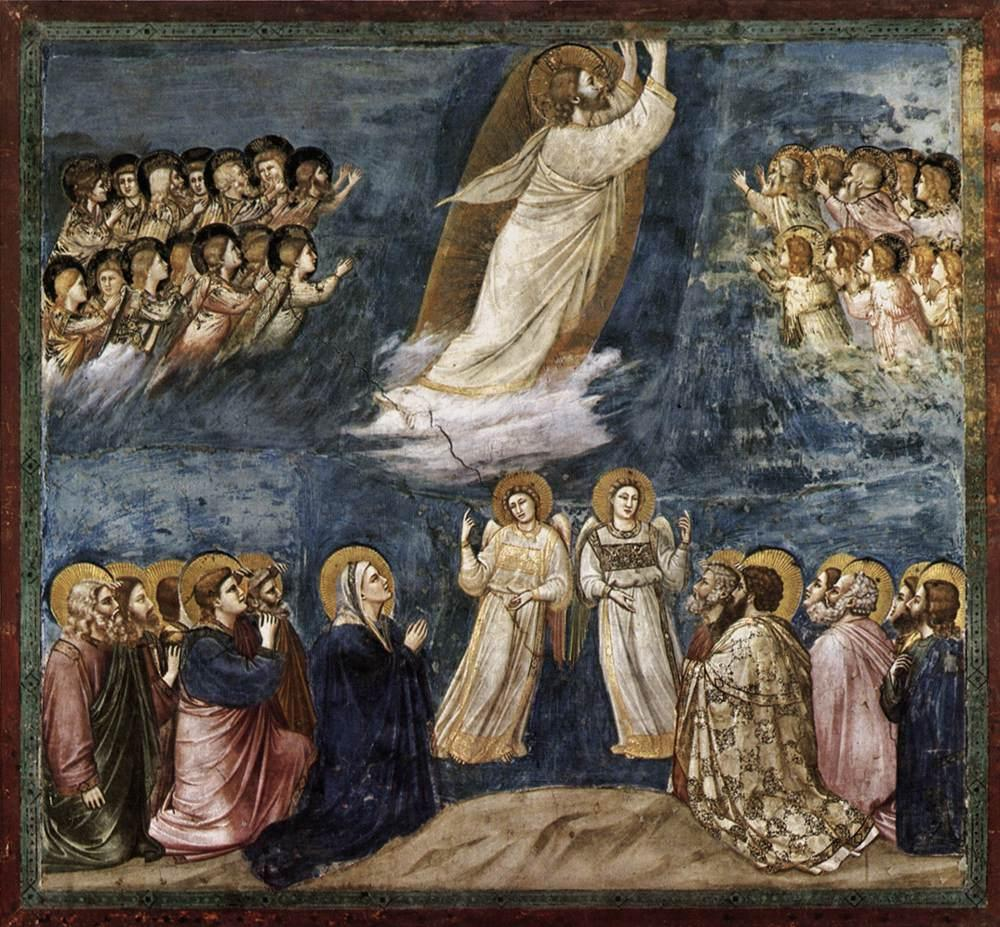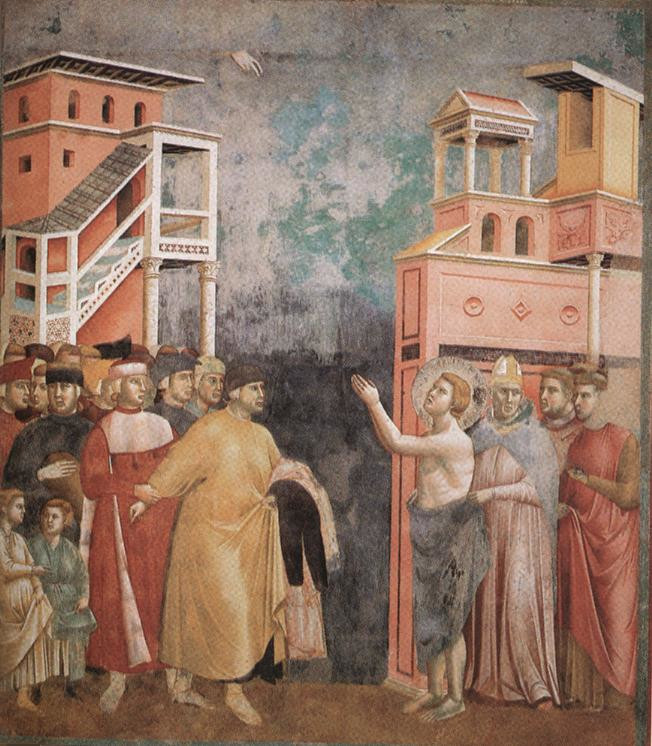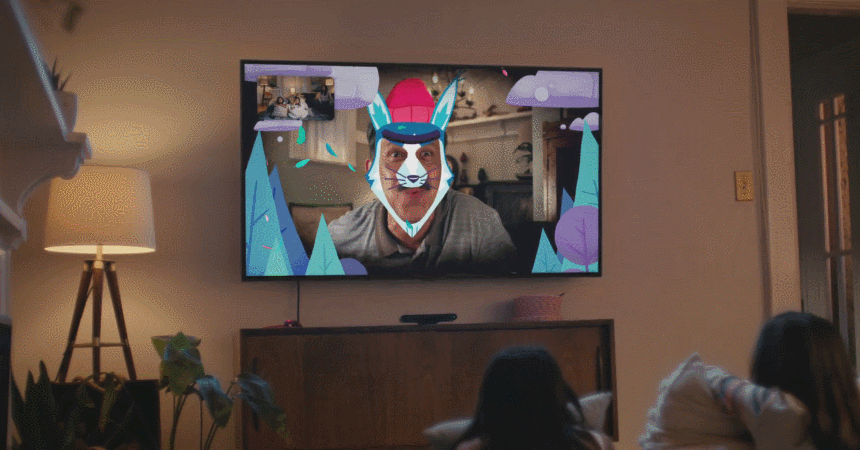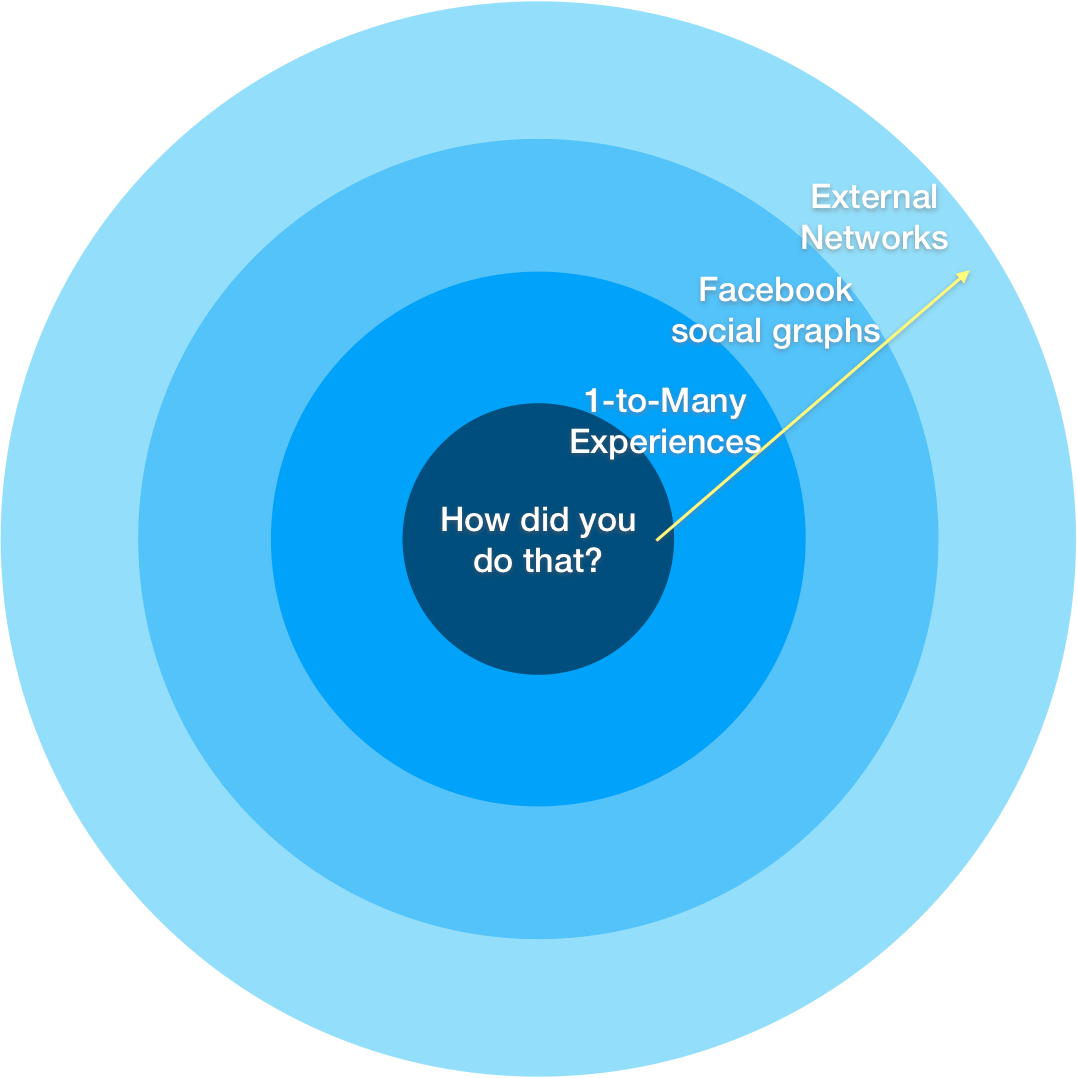I’ve been very curious about Facebook Portal since its launch announcement. The technology seemed immediately fascinating and, as a result, the user experience appeared different from anything seen until then. With my background as hardware product manager, I was also intrigued by a product coming from the most social, yet mostly software-centric, company on the planet.
自从Facebook门户网站发布以来,我一直对它感到很好奇。 该技术似乎立即引人入胜,结果,用户体验似乎与那时之前所看到的一切都不一样。 在我担任硬件产品经理的背景下,我对这个星球上最社交,但大多数以软件为中心的公司的产品也很感兴趣。
全新的沉浸式体验 (The novel approach to an immersive experience)
Video chat has been around for a while of course; I do remember being impressed, more than a decade ago, by the early prototypes of Cisco Telepresence, an high-resolution, life-size immersive video experience mainly designed for Enterprise customers; it was spectacular, especially back then, and you would not expect anything less than that for a tens-of-thousands-dollar Enterprise product, targeting the highest end of the market.
视频聊天已经存在了一段时间。 我确实记得十多年前,思科网真的早期原型给人留下了深刻的印象,思科网真是一种主要为企业客户设计的高分辨率,真人大小的沉浸式视频体验。 这真是太壮观了,尤其是在那时,并且您期望的目标是市场最高端的成千上万美元的企业级产品。
I looked for Portal video demos and reviews online, but I couldn’t get a real sense of the Portal experience until I tried it personally in a meeting with a Facebook employee. Without knowing, I immediately thought it must have been Portal on the other side, as the effect was truly unique. The experience was once again immersive, but not because of the size and the quality of the video like in Telepresence, but because of the perception of depth and movement.
我在网上寻找Portal视频演示和评论,但是直到我在与Facebook员工的会面中亲自尝试过之后,我才能真正了解Portal的体验。 不知不觉,我立即以为它一定是Portal的另一面,因为效果确实是独一无二的。 体验再次沉浸式体验,但这并不是因为视频的大小和质量(如网真),而是因为深度 和 移动 感 。
Portal reminds me of the transition from two-dimensional to three-dimensional painting in art. In the 14th century, Giotto was the first artist to introduce the “illusion” that his figures were fully three dimensional beings inhabiting real space. Giotto did that right by recreating the “movement” of the figures through a combination of light and shadow and the spatial “depth” through his intuitive perspective emulating human visual perception. It was a revolution, one that gave life to the glorious Italian Renaissance and inspired the work around geometric perspective of Brunelleschi, Alberti, Masaccio, Leonardo, Michelangelo.
《传送门》让我想起艺术中从二维绘画到三维绘画的过渡。 在14世纪,乔托(Giotto)是第一位介绍“幻觉”的艺术家,他的形象完全是居住在现实空间中的三维生物。 乔托做到了这一点,他通过模仿人类视觉感知的直觉 视角,通过光影的结合以及空间“深度”的再现,重新塑造了人物的“运动”。 这是一场革命,使光荣的意大利文艺复兴焕发了生命,并启发了布鲁内莱斯基,阿尔贝蒂,马萨乔,莱昂纳多,米开朗基罗的几何学观点。


With its novel approach, I believe Portal is the Giotto of video chat, and started a Renaissance era in this space. The risk for Portal is that the other major players will quickly close the technology and design gap, “inspired” by the success of Portal and its realistic approach. So, how can Portal win the distribution game and build a substantial install base during this window of opportunity?
凭借其新颖的方法,我相信Portal是视频聊天的乔托,并开始了该领域的文艺复兴时代。 Portal的风险在于,其他主要参与者将Swift弥补技术和设计上的差距,这受到Portal的成功及其现实方法的启发。 那么,Portal如何在这个机会之窗期间赢得发行游戏并建立大量的安装基础?
By distributing an hardware product as if it was a software one.
通过分发硬件产品就好像它是软件一样。
“你是怎么做到的?” 影响和其他软件增长黑客,以促进硬件产品的分销 (The “How did you do that?” effect and other software growth hacks to boost distribution of an hardware product)
Thinking about Portal made me realize how distribution strategies typically applied to software or even more specifically to social apps can also be applied to hardware products.
关于Portal的思考使我意识到,通常应用于软件甚至更具体地应用于社交应用程序的分发策略也可以应用于硬件产品。
“你是怎么做到的?” 影响 (The “How did you do that?” effect)
While designing and building mobile apps, I was constantly looking for ways to get “free distribution”, in particular by unlocking virality and word of mouth. I remember reading plenty of articles on “growth hacks”, but none covered one that I’ve discovered working exceptionally well: I call it the “How did you do that?” effect.
在设计和构建移动应用程序时,我一直在寻找获得“免费分发”的方法,特别是通过释放病毒性和口口相传。 我记得读过很多关于“增长黑客”的文章,但是没有一篇文章涵盖我发现工作异常出色的文章:我称其为“您是如何做到的?” 影响。
The recipe is simple: take a common action between two or more people, e.g. sending a text message, and empower the sender, the user of your service, to do something special enough to trigger the “How did you do that?” question from the receiver, not yet a user of your service.
方法很简单:在两个或两个以上的人之间采取共同的行动,例如发送一条短信,并授权发件人(您的服务的用户)执行足以触发“您如何做到这一点?”的特殊操作。 来自接收者的问题, 还不是您服务的用户。

For example, with iSocialize, a social networking mobile app I productized, we were one of the first apps to offer a library of animated gifs that users could send via text message or social media. The “word of mouth” from just that one feature was incredible and a pull through for the rest of the (paid) features in the app. Recipients were watching their screen animating for the first time and moved by surprise were asking the sender…
例如,使用我生产的社交网络移动应用程序iSocialize,我们是最早提供动画gif库的应用程序之一,用户可以通过短信或社交媒体发送该动画gif。 仅此一项功能的“口口相传”就令人难以置信,它为应用程序中其余的(付费)功能提供了便利。 接收者第一次观看他们的屏幕动画时,惊讶地问发件人……
“How did you do that?”
“你是怎么做到的?”
“I use this app, iSocialize!”
“我使用这个应用程序,iSocialize!”
Word of mouth was naturally triggered and free distribution unlocked.
口口相传自然而然地触发了,免费发行得到了释放。
Portal generates that same “How did you do that?” reaction, here applied to the common action of placing a video call between two or more people. The more immersive and smooth experience that I described above is immediately noticeable: which camera today follows you while you move or widens its angle when other people join the call? Portal has also even more obvious, maybe just less commonly used, “how did you do that?” features, from Augmented Reality (AR) masks to Virtual Cards to Story Time.
Portal会生成相同的“您是怎么做到的?” React,这里适用于在两个或更多人之间进行视频通话的常见操作。 我上面所描述的更加身临其境且流畅的体验是显而易见的:当其他人加入通话时,当您移动或扩大视角时,今天的哪个摄像头跟随您? 门户网站甚至更加明显(也许不那么常用),“您是怎么做到的?” 功能,从增强现实(AR)蒙版到虚拟卡再到故事时间。

Portal has the unique opportunity to trigger the virality of the “How did you do that?” effect to enter in as many households as possible, as fast as possible. The window opportunity might be short as other vendors will eventually catch up with the technology, confining Portal to stay a niche player.
Portal具有独特的机会来触发“您是怎么做到的”病毒式传播的 尽可能快地进入尽可能多的家庭的效果。 窗口机会可能很短,因为其他供应商最终将赶上该技术,从而将Portal限制为小众市场。
So how could Portal amplify this initial technology and product advantage?
那么Portal如何扩大这种初始技术和产品优势?
现有社交图的力量 (The power of existing social graphs)
A very common strategy to drive software distribution is to leverage existing graphs by building on top of it: social graphs (Facebook, Instagram, Whatsapp), business graphs (LinkedIn, Slack), personal graph (phone contact list). The “How did you do that?” effect gets amplified extremely well outside the initial product network when the content created by your product is distributed through large, existing graphs.
驱动软件分发的一种非常常见的策略是通过在现有图形的基础上加以利用:社交图形(Facebook,Instagram,Whatsapp),业务图形(LinkedIn,Slack),个人图形(电话联系人列表)。 “你是怎么做到的?” 当您的产品创建的内容通过现有的大型图形分布时,效果在初始产品网络之外的放大效果非常好。
Who better than Portal can leverage their unique access to the largest social graphs on the planet to first unlock usage and then get viral distribution?
谁能比Portal更好地利用他们对地球上最大的社交图谱的独特访问权来首先解锁使用情况, 然后进行病毒式传播?
社交图解锁使用 (Social graphs to unlock usage)
That’s exactly what Portal started doing. Instead of waiting to slowly build a network of Portal users (i.e. the initial product network) like for example Amazon Echo Show is forced to, Portal cleverly enabled at launch (November 2018) the ability to place video calls to Facebook and Messenger users even if they didn’t have Portal. A year later (December 2019), they enabled video calls to Whatsapp (and Workplace) users, expanding Portal reach to another immense user base. They then rapidly added the third virality axis with 1-to-Many group calls, by enabling Messenger and Whatsapp group calls (even though currently limited to 4 and 8 users), Live broadcast in Facebook personal profile, Groups and Pages to new Facebook Rooms.
这正是Portal开始做的事情。 与其等待慢慢建立门户网站用户的网络(即最初的产品网络)例如像亚马逊回声展是被迫的,门户网站在推出巧妙地启用(2018年11月)的能力进行视讯通话Facebook和Messenger用户即使他们没有Portal 。 一年后(2019年12月),他们启用了对Whatsapp(和Workplace)用户的视频通话,将Portal扩展到另一个庞大的用户群。 然后,他们通过启用Messenger和Whatsapp群组通话(即使当前仅限于4和8个用户),以Facebook个人资料,组和页面进行实时广播到新的Facebook聊天室,通过一对多群组通话快速添加了第三个病毒传播中心。 。
These initial steps are fundamental for Portal to unlock immediate usage within the more intimate social graphs associated to video calls (e.g. family, close friends, co-workers). But how to use specific social graphs to maximize and accelerate Portal distribution?
这些初始步骤对于Portal解锁与视频通话相关的更亲密的社交图表(例如家人,密友,同事)中的即时使用至关重要。 但是如何使用特定的社交图来最大化和加速 Portal的分布?
(特定的)社交图解锁病毒分布 ((Specific) social graphs to unlock viral distribution)
As we all know, the technology alone is not enough — consumers need to be educated and inspired with powerful use cases to trigger the viral loops I’m describing. Imagine then a marketing strategy centered around multi-cast/broadcast events: with 1-to-many interactions, you just need to give Portal to one user to trigger the “How did you do that?” effect for the many on the receiver side.
众所周知,仅凭技术还不够,需要对消费者进行教育和启发,以强大的用例触发我正在描述的病毒循环。 试想一下,围绕多播/广播事件的营销策略:通过一对多交互,您只需将Portal提供给一个用户即可触发“您是如何做到的?” 对于接收方来说,效果很好。
Facebook can/should discount or even give away Portal devices to fitness instructors, teachers, cooking class chefs, comedians for kids, in general anyone with an audience doing live video that involve movement or can take advantage from the device AR effects. Some of these categories in particular can have a very high viral coefficient: based on the prominence of the Story Time feature in marketing material, I have to believe that Portal is pretty successful in the kids-grandparents use case; offering Portal to teachers doing remote schooling will showcase the feature (“How did you do that?” effect) to tens of kids at a time, i.e. to users very much likely to convert.
Facebook可以/应该打折甚至赠送Portal设备给健身教练,老师,烹饪班厨师,儿童喜剧演员,一般来说,任何观众在观看涉及运动的实时视频或可以从设备AR效果中受益的人。 其中一些类别尤其具有很高的病毒系数:基于营销材料中“故事时间”功能的突出表现,我必须相信Portal在儿童祖父母的使用案例中相当成功; 向进行远程教育的老师提供Portal可以一次向数十个孩子展示该功能(“您是怎么做到的?”效果),即向极有可能转换的用户展示该功能。
It’s a product seeding strategy that can (and should) be highly targeted to be capital and margin efficient. Nobody better than Facebook is positioned to reach the right type of users based on profiling and even more specifically based on Facebook/Instagram Live data, now that these services are more and more popular. Longer term, independently of the type of discount offered if any, this 1-to-many profile should be one of most targeted by Portal “ads” to continue fueling the virality of the product.
这是一种产品播种策略,可以(并且应该)高度针对性地提高资本和利润率。 如今,这些服务越来越受欢迎,因此没有人能比Facebook更好地根据分析,甚至更具体地基于Facebook / Instagram Live数据来吸引合适类型的用户。 长期而言,与提供的折扣类型无关(如果有的话),此“一对多”配置文件应该是门户网站“广告”最有针对性的目标之一,以继续推动产品的病毒性传播。
门户作为内容创建设备 (Portal as a content creation device)
Furthermore, Portal could be easily turned into a content creation device, where videos can be created and distributed to social and video networks, instead of being just a live video chat or broadcasting tool: a video camera that follows you, auto-zooms, or has AR effects is something highly desirable for today’s content creators as it can produce high quality videos at a fraction of the production cost.
此外,Portal可以轻松地变成内容创建设备 ,可以在其中创建视频并将其分发到社交网络和视频网络,而不仅仅是实时视频聊天或广播工具:跟随您的摄像机,自动缩放或具有AR效果对于当今的内容创作者来说是非常需要的,因为它可以以制作成本的一小部分制作高质量的视频。
This will open up another layer of distribution, now external to Facebook properties.
这将打开另一个分布层,现在位于Facebook属性外部。
Hotmail签名 (The Hotmail signature)
On top of the “How did you do that” effect, a “growth hack” again inherited from software could be used to justify the “seeding” strategy of Portal devices: the famous Hotmail signature. When Hotmail launched, each email sent had a “Get your free e-mail at Hotmail” at the bottom with a link to the Hotmail registration page; Hotmail grew like nothing else seen before.
除了“您是怎么做到的”效果之外,再次从软件继承的“增长黑客”可以用来证明Portal设备的“播种”策略: 著名的Hotmail签名 。 启动Hotmail时,每封发送的电子邮件在底部都有一个“在Hotmail上获取免费电子邮件”,并带有指向Hotmail注册页面的链接。 Hotmail的发展前所未有。
Such user affiliation approach could be used with Portal too, by adding the label “Live on Portal” and “Made with Portal”.
通过添加标签“ Live on Portal”和“ Made with Portal”,这样的用户隶属关系方法也可以与Portal一起使用。
Combined with the seeding strategy previously discussed, it might be easily considered as an acceptable “exchange” token for a free/discounted product. Such watermark could also evolve into something “cooler” like “Portal TV” or similar and turned into a form of validation and legitimacy, similar to blue checkmark in social profiles.
结合先前讨论的播种策略,可以轻松地将其视为免费/打折产品的可接受的“交换”令牌。 这样的水印也可能演变成诸如“门户电视”之类的“酷”字样,并变成一种验证和合法性的形式,类似于社交资料中的蓝色对勾标记。
I personally would debate this watermark strategy, but again it’s interesting to note how software growth hack can be applied very well to hardware products too.
我个人将讨论这种水印策略,但是再次值得注意的是,软件增长黑客也可以很好地应用于硬件产品。
复合病毒效应 (A compounding viral effect)
It’s easy to see how the right distribution strategy could drive exponential growth for Portal due to the compounding effect of several layers of virality:
容易看出,由于几层病毒的复合作用 ,正确的分配策略将如何推动Portal的指数增长:
- The word of mount driven by the “How did you do that?” novelty of the product “您是怎么做到的?”驱动的坐骑一词 产品的新颖性
- The focus on the one-to-many experiences to amplify that viral effect 着重于一对多的体验以扩大病毒效应
- The ability to leverage the immense Facebook, Instagram and Whatsapp networks to both offer Portal devices to broadcasting users and then distribute their Portal content 能够利用庞大的Facebook,Instagram和Whatsapp网络将Portal设备提供给广播用户,然后分发其Portal内容
- The expansion to external networks like YouTube with the (for now missing) content creation component of Portal 使用Portal的内容创建组件(目前不存在)扩展到YouTube之类的外部网络

还有一件事 (One more thing)
I talked a lot about distribution, but the product manager in me has one last question: What feature, reasonably simple to add to current product, could make the video chat experience even more “realistic” and unique?
我谈论了很多有关分销的问题,但是我的产品经理还有最后一个问题:可以简单地添加到当前产品中的什么功能可以使视频聊天体验更加“逼真”和独特?
The point of video chat is to connect two or more people that are not in the same room, right? So what if an AR effect is offered to virtually put user A in the room of user B and vice versa?
视频聊天的目的是将两个或两个以上不在同一房间的人联系在一起,对吗? 那么,如果提供了AR效果以虚拟地将用户A放在用户B的房间中,反之亦然呢?
Each person will “blend” into the other person reality, improving mutual perception, making the experience more immersive and unlocking new activities that can be done “together” (e.g. dancing, playing, acting, singing, etc). The positioning of the interlocutor into the own space can be manually changed by dragging the other person around or zooming it for better (or fun) results, it can be mirrored or kept independent in each space.
每个人都将“融合”到另一个人的现实中,从而改善彼此的知觉,使体验更加身临其境,并开启可以“一起”完成的新活动(例如,跳舞,玩耍,表演,唱歌等)。 对话者在自己的空间中的位置可以通过在周围拖动其他人或缩放以获得更好的(或有趣的)结果来手动更改,它可以在每个空间中镜像或保持独立。
Just another way to bring people together and a little bit closer.
这是使人们团结起来的另一种方式。
翻译自: https://medium.com/swlh/facebook-portal-and-the-renaissance-of-video-chat-86f925b3af1e




















 2万+
2万+











 被折叠的 条评论
为什么被折叠?
被折叠的 条评论
为什么被折叠?








